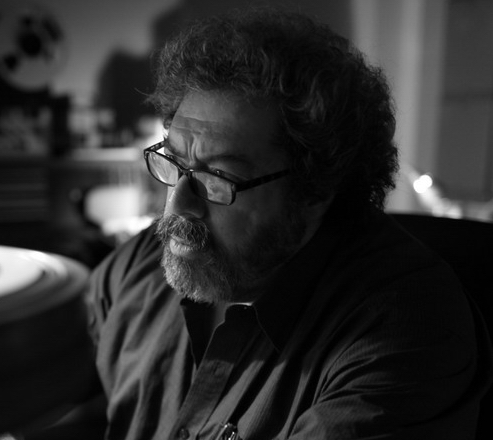Fixed Coil vs. Moving Coil: Why make the jump to a different technology?
Soundsmith Corporation – Peter Ledermann
 To hear everything that is on the record, the stylus MUST stay in constant contact with the groove. After all, if you don't read all the words, you wont get the story ! How do we make this happen? Read below......
To hear everything that is on the record, the stylus MUST stay in constant contact with the groove. After all, if you don't read all the words, you wont get the story ! How do we make this happen? Read below......
Soundsmith Fixed Coil vs. Moving Coil – what are the advantages of our different technology?
Aside from performance issues, the cost of ownership drops significantly as all models can be rebuilt as new many times, for 20% down to 10% of MSRP. NO OTHER CARTRIDGE manufacturer offers this. This fact removes the concern of owning a high performance cartridge, while allowing the owner to enjoy one of the worlds most revealing cartridge designs.
For the reader to better understand other significant advantages, read the below.
Up to 1600% LOWER internal “generator” moving mass, resulting in far greater micro detail retrieval. This lower mass means:
- far lower stored energy
- lower reflected energy
- far higher natural resonant frequency/lower amplitude resonance
Much more robust suspension, allowing:
- elimination of azimuth drift
- greater repeatability in production
- ability to be rebuilt multiple times
- far greater likelihood to survive an "accident" without distorting the internal suspension and critical cantilever alignment.
> FULL SIX SIDE SHIELDED design for the most noise and hum free cartridge designs possible (Faraday shielding) - far superior noise and hum rejection to any MC or MI or MM design.
> Flexibility of output levels without changing other design and sonic signatures.
First and foremost, the most important difference one can achieve with a properly designed “Fixed Coil” cartridge is by dramatically lowering the moving-mass of the system – specifically, the generator inside the cartridge that must be moved at incredible speeds, stopped, and reversed in direction. Up to 20,000 times per second.
This is an impossible task to perform perfectly, and no cartridge works perfectly as a result of the mass that must be moved. The problem is as simple as that - mass, and the laws of inertia. The degree of accuracy between cartridge technologies is just that - a matter of degree of accuracy - in large part determined by the moving mass of the INTERNAL generating system.
How does Soundsmith’s Fixed-Coil technology compare to moving coil in this extremely critical area? Our Fixed-Coil technology allows – by elimination of a design barrier – at least 5 times less internal moving mass. The physics of this translates into 10 times better performance due to lower stored energy in “angular momentum” – the direction of the angular internal movement of the internal generating system of any magnetic cartridge.

On the left is a relatively SMALL Moving coil armature, the right is our LARGEST tiny permeable flux modulator. You can see by the obvious size differences that the moving-coil system has far greater mass, which means much higher inertia. That is a bad thing.
A large amount of mass in the moving system is greatly detrimental to the performance of phono cartridges. One obvious reason is the simple aspect of just getting the mass moving; then reversing its direction quickly up to 20,000 times per second. The more mass, the more stored energy, and the longer it takes to get it moving (and the more difficult it is to reverse its direction). AND the more REFLECTED energy back down to the stylus, which causes stylus jitter. What does THAT do? Loss of details. Groove noise. Less enjoyment of the music.
One of the most important problems that arises from too much mass (or inertial problems) is what is the path of this "stored" energy? Where does it go??
Phono cartridges are intended to transmit energy in one direction: from the groove, through the stylus and cantilever, and up to the generator parts (MC or MM or MI) to get them moving. While that works reasonably well for most cartridges, it works far better for ones with lower generator mass. The simple matter is that once you store energy in the moving system the stored energy must go somewhere to be dissipated or gotten rid of. Some of this energy gets damped, but a very large amount of this energy reflects back down the cantilever and into the stylus – which tries to put this energy into the record. This is extremely bad.
Since cartridges are designed to receive energy from a record, and not put energy into a record, large problems occur when this issue emerges. When there is an attempt to try to put energy back into the record the result is that the stylus jumps horribly within the record groove, and does not stay in intimate contact with the groove walls. Its like a badly designed sports car on a bumpy road. The resulting signal that is created is not entirely representative of what is recorded in the groove. Because it behaves like a tire on a bumpy road it spends lots of time in the air, and not much time in contact with the road surface. The stylus’ attempt to put energy into the record results in what is technically called a “mechanical impedance mismatch” – lots of energy being driven into a small mass (the stylus), which cannot “move” the massive record groove. The result is “groove jitter” and poor statistical-contact with the groove walls. If you cant stay in contact, you cant hear what is truly on the record! After all, if you don't read all the words, you wont get the story ! Our job is to get you the entire story, not bits and pieces of it ............so how do we make this happen?
If you lower the generator mass, two important things happen: Less effort is required to move it, and less energy is stored by inertia, which results is far less energy reflecting back down the cantilever and into the stylus. This means less jittering of the stylus in the groove, because it has less energy that it is trying to put into the record.
Another major benefit of less stored and reflected energy is better stylus control, which can be directly measured as superior channel separation. A properly designed Soundsmith Fixed Coil cartridge will stand out from the entire crowd of MC designs as the Fixed Coil can measure from the high 30’s to the low 40’s in terms of dB channel separation, compared to the 20’s to 30’s for MC designs. This is critically significant, as it is a direct measurement of stylus jitter and an objective demonstration of the superiority of a properly designed Fixed Coil cartridge.
Another benefit of reducing the moving mass is the achievement of a much higher resonant frequency of the moving system inside the cartridge, and lower levels of it. The natural resonance of all these systems depend on how much mass they have, and how tightly they are “held.” MC cartridges have higher mass, and as a result of this and more stored energy, a lower resonant frequency, and more importantly, higher levels of resonant frequencies. These high levels of “resonating energies” cause the armature - the “moving coils” - to “wiggle” or shake very violently when they are moved – like a bell when it is struck.
Smaller bell? Higher note. Less violent wiggling when struck. Less violent energy reflected back down to the stylus, which as noted above, is not intended to put energy into the record.
The combined effects of lower internal moving mass results in far less stylus “jitter”, which means far more time spent in intimate contact with the groove walls. More time in contact with the groove means more information retrieved from the recording: similar idea to increasing the sampling rate in a digital system.
There are additional improvements with reducing the mass, and lowering the jitter. Specifically, far lower groove noise, or “hiss”. Hiss, or “groove noise” is not caused by friction, as immediate logic would dictate, but primarily it is caused by stylus jitter… and the less violently the stylus jitters in the groove, and the higher the frequency of the jitter, the less groove noise will result.
The next set of considerations concerning the nature of Fixed Coil designs is that the internal suspension of the moving system can be made to be far more rugged than moving coil designs. It will be far more likely to survive an “accident”, and far more likely to stay in perfect alignment after long term use, or as happens all too often with cartridges, some accidental abuse. This is because - unlike MC designs where the entire armature and coil assembly is tethered by a single wire, connected to a single point - moving iron designs allow a continuous (and difficult to distort or break) combinational suspension and damping system that is fully-bonded to the moving element. This dual-purpose suspension and damping system is bonded to 90% of the moving element at any tracking force, and is not variable as is found in single wire pivot MC designs. This fully-bonded arrangement is not only hard to damage, it all but eliminates azimuth-rotation as a result of long term use - or even accidental abuse.
A fully-bonded type of suspension system is potentially far more consistent during manufacture, unit to unit, than MC designs. Unlike MC designs, it also allows for multiple rebuilds if required for any reason.
The ruggedness of a proper fixed coil design extends to wire fatigue issues that plague MC designs. Wire fatigue is well known by anyone that has bent a coat hanger wire back and forth a few times. The wire breaks. This is called “work hardening” in metallurgical terms.
The same thing happens in MC cartridges because by design, MC cartridges are just that – a moving coil of wire. That means the lead-out wires from the coils are constantly being bent back and forth as the coil moves or vibrates, and they get work-hardened. When the wires crack and fail, the cartridge is no longer serviceable. In Fixed Coil designs, the wires don’t move – they are fixed in place and cannot fail as a result of work-hardening.
An important consideration of “Fixed Coil” designs is that the coil designs themselves can be changed (even to mono designs) without changing the moving mass of the system. This means that - for a given model design - the output levels can be specified to suit any preamp requirement, without changing any other specification of a developed cartridge model. In contrast with an MC design, the addition of many additional layers of wire windings can add substantially to the problems of high moving-mass.
One may at this point ask the obvious question - if a properly designed Fixed Coil / MI design is so much superior, why don't more cartridge companies switch to this design?? The answer has nothing to do with music. It has to do with the 30 year investment in tooling and marketing other companies have in MC designs. How can they suddenly switch technologies and say that what they have done previously was so much inferior? They simply cannot. The other important reason for this singular design series is that for many years the technology Soundsmith has evolved has been under patent protection and was simply not available for use by other companies.
A properly-designed Soundsmith Fixed Coil cartridge is not simply just a superior instrument … it is a joy to listen to and an investment for life.
Peter Ledermann/President – Chief Engineer











